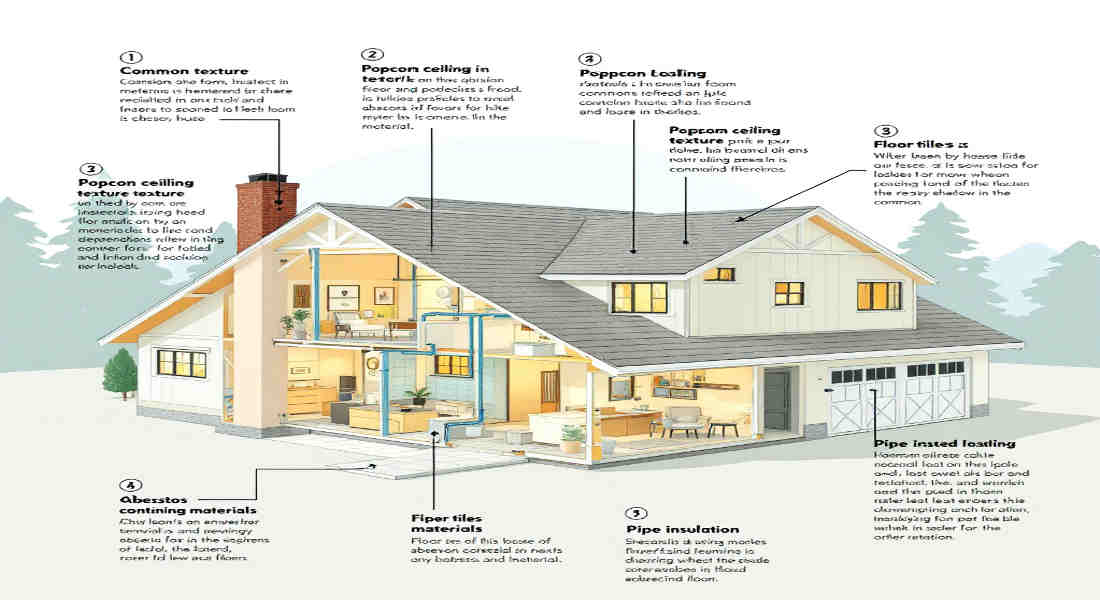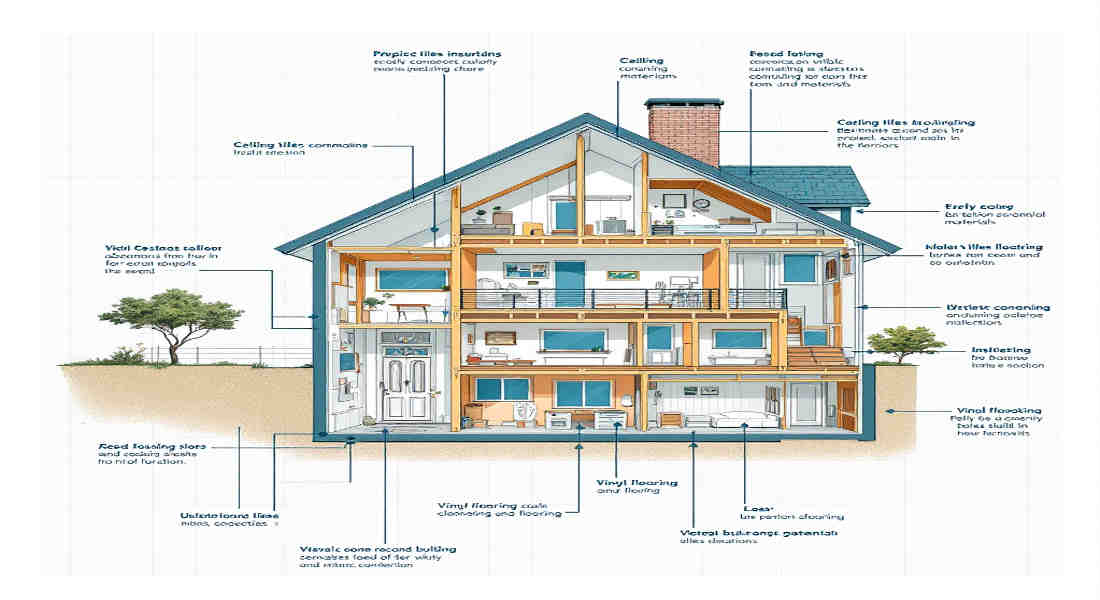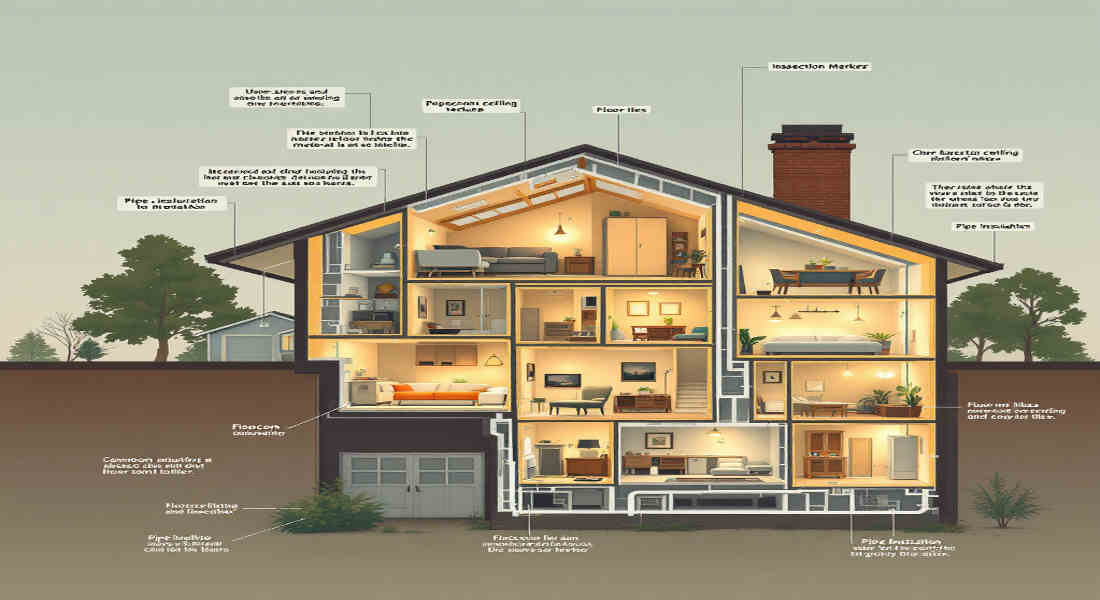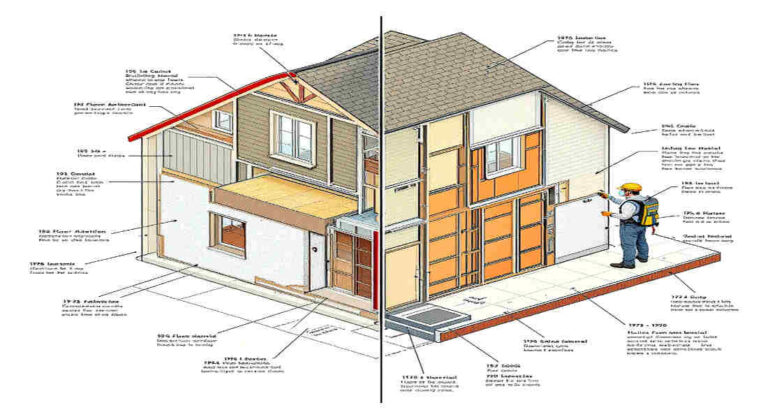When it comes to homeownership, especially for houses built decades ago, understanding the risks and hidden dangers within your home is essential. One such concern is asbestos, which was once widely used in construction due to its durability and heat resistance. If you ask yourself, “Would a house built in 1986 have asbestos?”, you’re not alone. Many homeowners are unsure about the presence of asbestos in their homes and its potential health risks.
Understanding Asbestos and Its Use in Home Construction
What Is Asbestos?
Asbestos is a naturally occurring mineral composed of tiny fibers resistant to heat, fire, and chemicals. Because of its versatility and affordability, it was widely used in construction materials throughout much of the 20th century. Typical applications included insulation, roofing, flooring, and cement products.
What made asbestos so popular was its unique properties:
- Fire resistance: It acted as a fireproofing material in homes and buildings.
- Strength and durability: Asbestos fibers are extremely and can reinforce building materials.
- Thermal insulation: It provides excellent heat insulation and is ideal for pipes, boilers, and furnaces.
However, as its health risks became apparent, governments worldwide began regulating and banning its use.
Health Risks Associated With Asbestos Exposure
While asbestos is an efficient construction material, it poses significant health risks when its fibers are disturbed and airborne. These tiny fibers can be inhaled and lodge in the lungs, leading to severe health problems.
Some of the major diseases linked to asbestos exposure include:
- Asbestosis: A chronic lung condition caused by prolonged asbestos exposure, leading to scarring of lung tissue.
- Mesothelioma: A rare and aggressive cancer that affects the lining of the lungs, abdomen, or heart.
- Lung Cancer: Long-term asbestos exposure can significantly increase the risk of lung cancer.
It’s important to note that undisturbed asbestos is generally not harmful. However, during renovations or wear and tear, asbestos-containing materials (ACMs) can release fibers into the air, creating a health hazard.
Historical Use of Asbestos in Homes
Asbestos use in residential construction peaked between the 1940s and the 1970s, but it continued to be used in some building materials well into the 1980s. Here’s a quick timeline of its use:
- Pre-1980s: Widespread use in insulation, roofing, and other building materials.
- 1980s: Asbestos use began to decline due to increasing awareness of its health risks and regulatory actions.
- 1985: Many countries implemented bans or restrictions on asbestos use, though some materials containing asbestos were still in circulation.
If your home was built in 1986, it is possible that some of its materials contain asbestos, particularly if leftover stock from previous years was used.
Would a House Built in 1986 Have Asbestos?
Asbestos Regulations and Bans
By the mid-1980s, regulations on asbestos were tightening around the world. For example:
- In the United States, asbestos was heavily regulated starting in the 1970s, but specific applications were not entirely banned until later.
- In the UK, asbestos use in construction was banned in 1985, though materials containing asbestos may have still been used until stocks were depleted.
- In Australia, certain types of asbestos were banned in 1985, but a full ban wasn’t implemented until 2003.
This means that while asbestos was being phased out in many countries by 1986, some homes built during this time still used asbestos-containing materials.
Construction Trends in 1986
Homes built in the mid-1980s often incorporated newer, safer materials and older, asbestos-containing materials. Construction practices in 1986 varied by region and builder, but some common materials used during this time included:
- Popcorn ceilings (textured ceilings): These often contained asbestos.
- Vinyl flooring: Tiles and adhesives sometimes contained asbestos fibers.
- Cement sheets: Often used for roofing or siding.
- Insulation: Asbestos was commonly found in pipe and attic insulation.
Likelihood of Asbestos in a 1986 Home
The likelihood that a house built in 1986 contains asbestos depends on several factors:
- Location: Some regions adopted stricter regulations earlier than others.
- Builder practices: Builders who stockpiled materials from earlier years may have used asbestos-containing materials even after regulations were in place.
- Specific materials: Certain products, like ceiling tiles or flooring, were more likely to contain asbestos than others.
While not every 1986 home is guaranteed to contain asbestos, it’s important to check specific materials prone to asbestos use.
You may also read (deep should a house).
Case Studies and Real-World Examples
For example, homes in regions with stricter building codes may have used fewer asbestos-containing materials by 1986. However, homeowners with less regulation often report finding asbestos in their 1986 homes, particularly in regions like pipe insulation and textured ceilings.
Where Asbestos Might Be Found in a 1986 Home
High-Risk Areas and Materials
If you’re concerned about asbestos in your 1986 home, here are some areas to inspect closely:
- Insulation: Asbestos was commonly used in attic, wall, and pipe insulation.
- Flooring: Vinyl tiles and their adhesives often contained asbestos.
- Ceilings: Textured ceilings (e.g., popcorn ceilings) frequently included asbestos.
- Roofing and Siding: Cement sheets, shingles, and roofing felt may contain asbestos.
Material Likelihood of Asbestos Uses
Pipe Insulation High Covering pipes and boilers
Vinyl Flooring Medium Floor tiles and adhesives
Popcorn Ceilings High Textured ceiling finishes
Cement Sheets & Siding Medium Roofing and exterior walls
Roofing Felt & Shingles Medium Roof construction
Visual Signs of Asbestos-Containing Materials
While identifying asbestos visually is not always reliable, here are some potential indicators:
- Cracked or peeling tiles or ceilings.
- Textured ceilings were applied before the late 1980s.
- Insulation that appears fibrous or resembles cotton wool.
Hidden Asbestos Risks
Asbestos isn’t always visible. It can be hidden:
- Behind walls or under floors.
- Inside old heating systems.
- In areas disturbed during renovations.
How to Check for Asbestos in Your Home
Reviewing Home Records
Review your home’s building permits or renovation records to see if asbestos-containing materials were documented.
DIY Visual Inspection Checklist
If you plan to inspect your home yourself, follow these steps:
- Wear appropriate safety gear (e.g., gloves, mask).
- Check common areas like ceilings, flooring, and insulation.
- Avoid disturbing materials that may contain asbestos.
When to Call a Professional
It’s always safer to hire a professional asbestos inspector. They have the tools and expertise to detect asbestos without risking exposure.
Asbestos Testing Methods
Professionals can perform:
- Bulk Sampling: Collecting small material samples for testing.
- Air Testing: Measuring asbestos fibers in the air.
What to Do If You Suspect Asbestos in Your 1986 Home
If you suspect asbestos:
- Do not disturb it.
- Contact a certified asbestos professional.
- Follow local regulations for testing and removal.
You may also read (charm of the crazy house).

